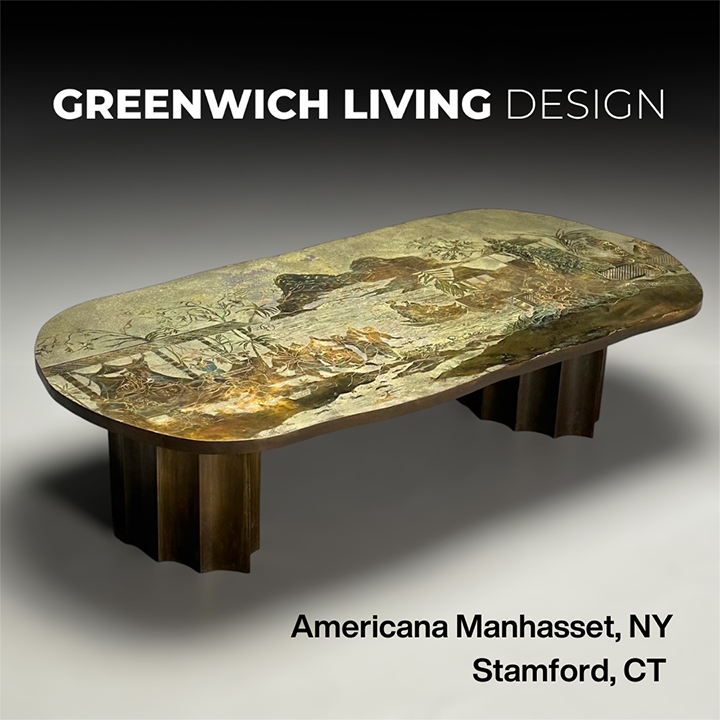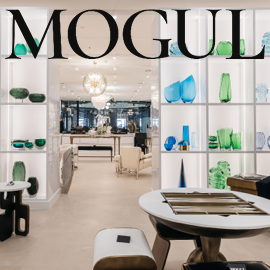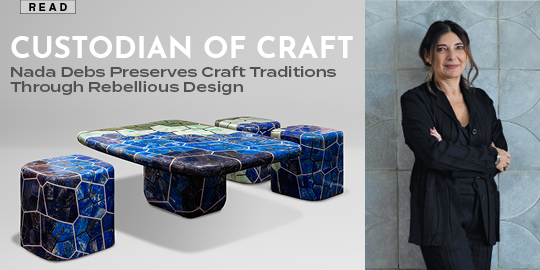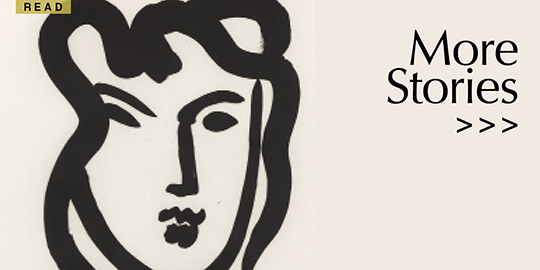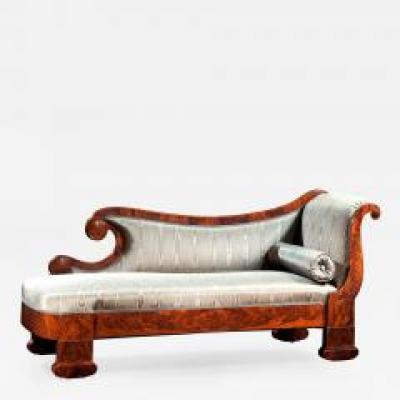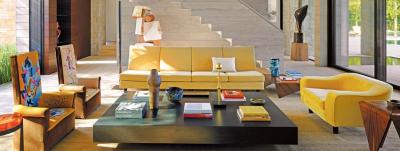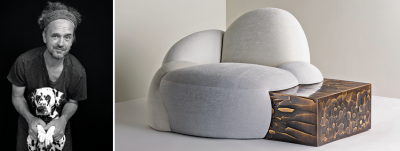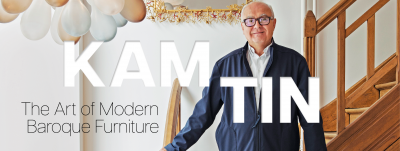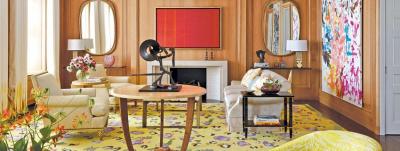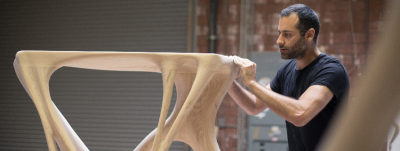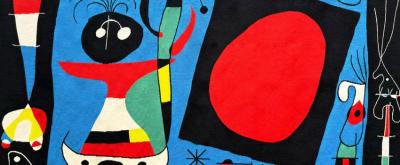Changing Perspectives on an Iconic American Craftsman: Duncan Phyfe at the Metropolitan Museum
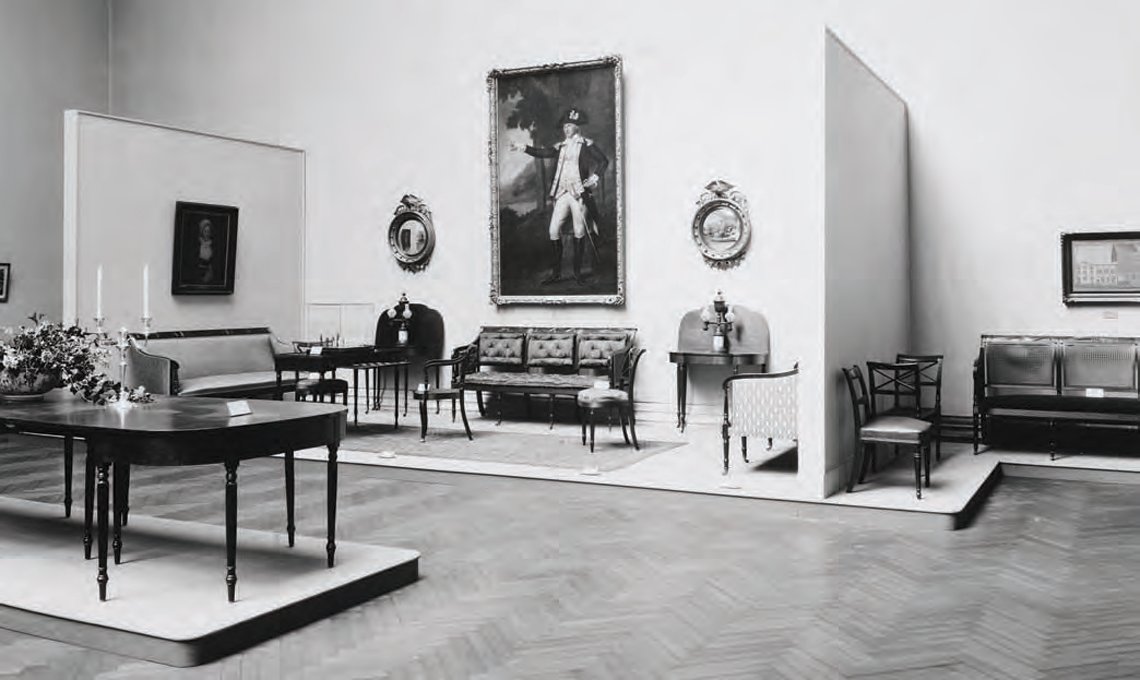 |
Fig. 1: Gallery view of the 1922 exhibition Furniture from the Workshop of Duncan Phyfe, 1768–1854. Photographer unknown. Courtesy, The Metropolitan Museum of Art, New York. |
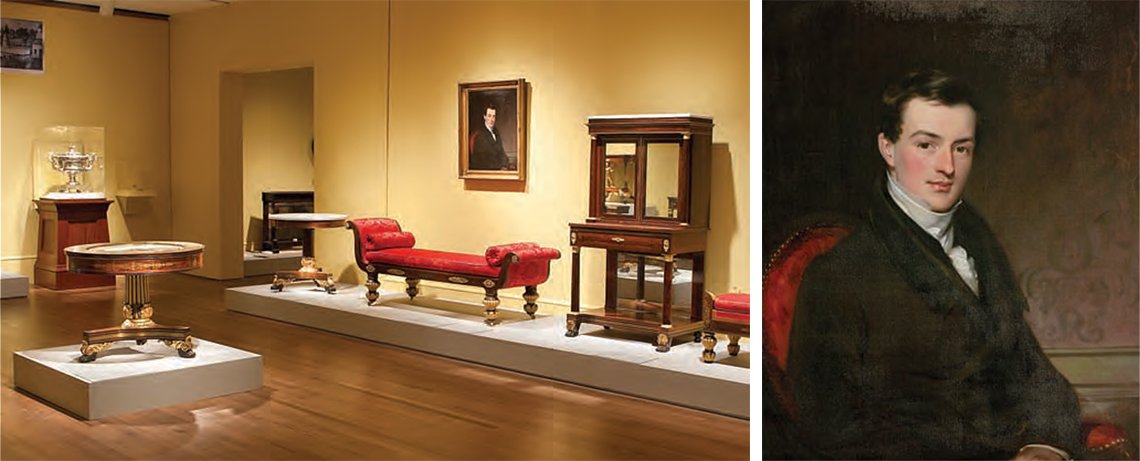 |
Left: Fig. 2: Gallery view of the current exhibition, Duncan Phyfe: Master Cabinetmaker in New York. Courtesy, The Metropolitan Museum of Art, New York. Right: Fig. 3: Charles R. Leslie (1794–1859), Robert Donaldson, 1820. Oil on canvas, 30-1/2 x 25-1/2 inches. Courtesy, Richard Hampton Jenrette. |
On October 15, 1922, The Metropolitan Museum opened to the public Furniture from the Workshop of Duncan Phyfe (Fig. 1), the first exhibition ever held in an art museum on the work of a single cabinetmaker. Ninety years later and only for the second time in history, a major retrospective on this iconic American craftsman and his furniture is again on view there, in the Erving and Joyce Wolf and Israel Sack Galleries of the American Wing. Duncan Phyfe: Master Cabinetmaker in New York (Fig. 2) seeks to provide a fresh new perspective on Duncan Phyfe (1770–1854) and his work by bringing together for the first time documented furniture made during each successive style phase of his long, distinguished career.
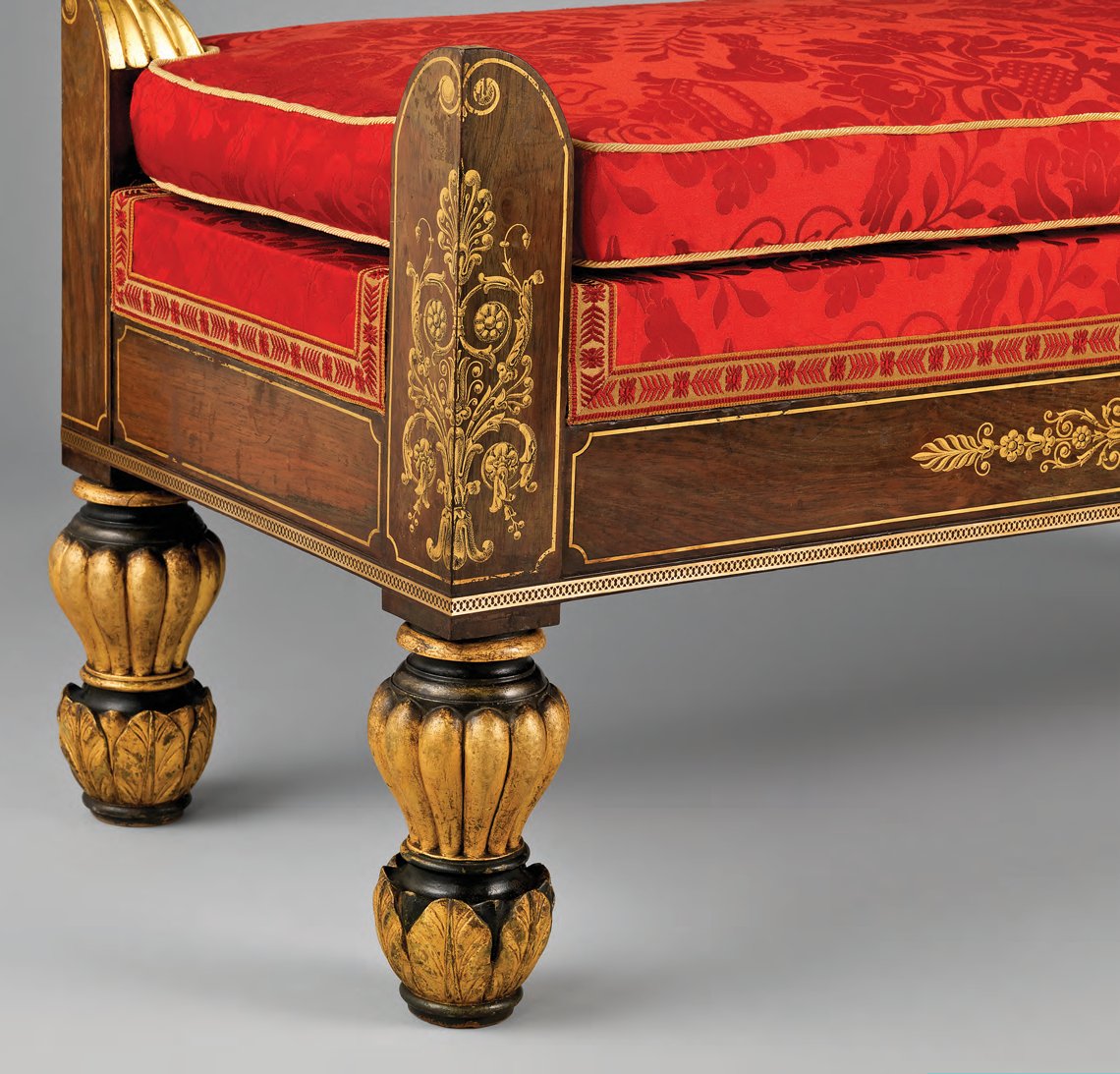 | |
Fig. 4: Duncan Phyfe (1770–1854), detail of window seat, 1826. Rosewood veneer, stenciled and freehand gilding, gilded gesso and vert antique; secondary woods: ash, cherry or gumwood. H. 19-1/4., W. 42-1/2, D.17 in. Courtesy, Brooklyn Museum, Anonymous gift (42.118.12). |
What interested the curator of the 1922 exhibition, Charles Over Cornelius, and the coterie of early collectors who lent their furniture to the show was Phyfe’s work from his so called “best period,” produced in the Phyfe workshop between about 1805 and 1820. This narrow window in time, however, eliminates fully half the furniture made and sold at the Phyfe cabinetmaking establishment before it closed its doors for good in 1847. Such an omission might be understandable in light of the generally accepted rule of thumb that a piece of furniture must be at least a hundred years old for it to be considered an antique and therefore worthy of acquisition and study. But there was another force at work that may have caused a bias against later Phyfe furniture, namely, the strong negative opinion held on the subject by Ernest F. Hagen (1830–1913), Duncan Phyfe’s earliest biographer and a cabinetmaker himself, who sold and restored authentic Phyfe furniture, served as an expert consultant to The Metropolitan, and worked with many early Phyfe collectors on building their collections. In Hagen’s now famous 1907 memorandum on Phyfe he wrote:
Duncan Phyfe’s chief merit lies in the carrying out and Especially improving of the “Sheriton” [sic] style of Settees, Chairs and tables in his best period the work about 1820 although the workmanship was perfect gradually degenerated in style at first to the questionable “American Empire” and after 1830 to the abominable heavy Nondescrip [sic] veneered style of the time when the cholera first appeared in New York 1833 to 1840–1845 when the overdecorated and Carved rosewood style set in which Phyfe himself called the “Butcher” furniture.1
Unfortunately, Hagen’s colorful, even scurrilous, description of Phyfe’s later furniture, accepted and then repeated by generations of curators, antiques dealers, and collectors, has unfairly shaped our view of this work. And while the furniture from Phyfe’s “best period” certainly has a prominent place in the current exhibition, equal space, and more, is devoted to that produced and sold at the Phyfe furniture manufactory and warehouse during its middle and late stages. Some key documented examples of this furniture in the richly ornamented Grecian mode, the sleek, minimalist Grecian plain style, and even from that dreaded period of the “Butcher” furniture, 1840–1845, provide a basis for an informed reconsideration of this later work.
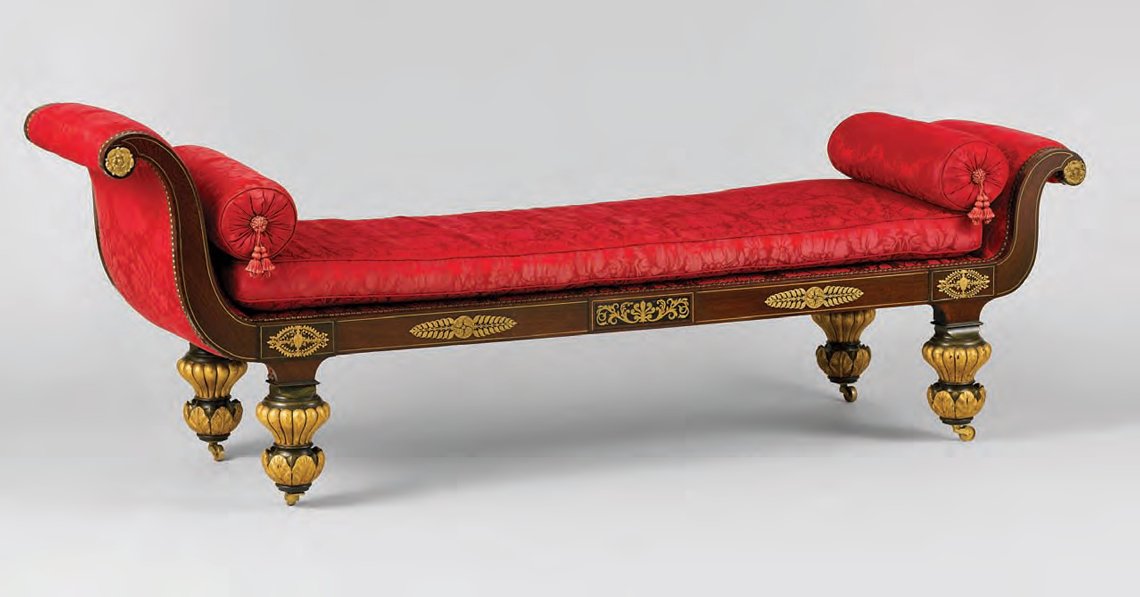 |
Fig. 5: Attributed to Duncan Phyfe (1770–1854), Grecian couch or daybed, 1826. Rosewood veneer, gilded gesso and vert antique, gilded brass; secondary wood: ash. H. 20-3/8, W. 86-1/2, D. 25. in. Courtesy, Brooklyn Museum, Anonymous gift (42.118.11). |
On at least two occasions during the 1820s Robert Donaldson (1800–1872) of Fayetteville, North Carolina, and New York City ordered furniture from Duncan Phyfe in the most up-to-date, richly ornamented Grecian style. Donaldson inherited his wealth from his Scottish-born father and bachelor uncle, owner of a successful London commission house. In 1820 he travelled to London to claim his fortune and while there sat for Charles R. Leslie (1794–1859), the resident American portrait painter (Fig. 3). He returned to Fayetteville and soon after purchased a suite of rosewood and faux-rosewood painted parlor furniture from Phyfe, recorded on an invoice dated August 21, 1822. By 1827 he had moved to New York City where he purchased the former home of Archibald Gracie at 15 State Street, overlooking New York harbor. Donaldson returned to Phyfe for additional pieces for his State Street home, including a pair of window seats (detail shown Fig. 4), both of which survive in the collection of the Brooklyn Museum. One of the window seats is signed “D. Phyfe” on the under upholstery and one of the original set cushions is inscribed with the date July 4, 1826 on the linen under cover. The opulence, clean lines, and solidity of these window seats and a matching Grecian couch or daybed (Fig. 5), as well as a secretary bookcase (Fig. 6) embody the moralizing philosophy of Regency designer and connoisseur, Thomas Hope (1769–1830/1831), who implored wealthy patrons and craftsmen alike to make furniture that served as “instruments of universal and of durable gratification, as well as of solid and permanent grandeur.”
 | |
Fig. 7: Receipted invoice to Mr. B[enjamin] Clark, August 16, 1834. Photography by John Reinhardt. Courtesy, Mr. and Mrs. Robert L. Hammett. |
One can imagine the aesthetically attuned and newly wealthy Robert Donaldson imbibing every detail of late Regency architecture and interior decoration on his tour of London and perhaps playing a collaborative role with Phyfe in the design of this furniture. Donaldson was a close compatriot of the horticulturalist and landscape architect Andrew Jackson Downing (1815–1852), who dedicated his book Cottage Residences (1842) to “Robert Donaldson, esq, of Blithewood, on the Hudson, Arbiter elegantiarum”— the ultimate judge in matters of taste. It is little wonder that Phyfe signed the window seat he made for this most extraordinary client.
Documentary evidence indicates that Hagen was correct in his belief that the Grecian plain style emerged in New York around the time of the infamous cholera epidemic of 1832. The advertising broadside of the New York cabinetmaking firm of Joseph Meeks & Sons issued in 1833 shows lithographic images of furniture in this radical new style, and in 1834 the New York journeyman cabinetmakers’ price book was updated and reissued to include descriptions and line drawings of the simplified, veneered design elements that characterize the style. Duncan Phyfe’s earliest known Grecian plain style furniture was also made at this time and is documented by an invoice to Benjamin Clark of New York City dated August 16, 1834 (Fig. 7). Nearly half the furniture on that bill survives and in its elegant simplicity and precision one can see that Phyfe continued to live up to his reputation as an intelligent designer and a stickler for quality in his late adaptations of the French Restauration style.
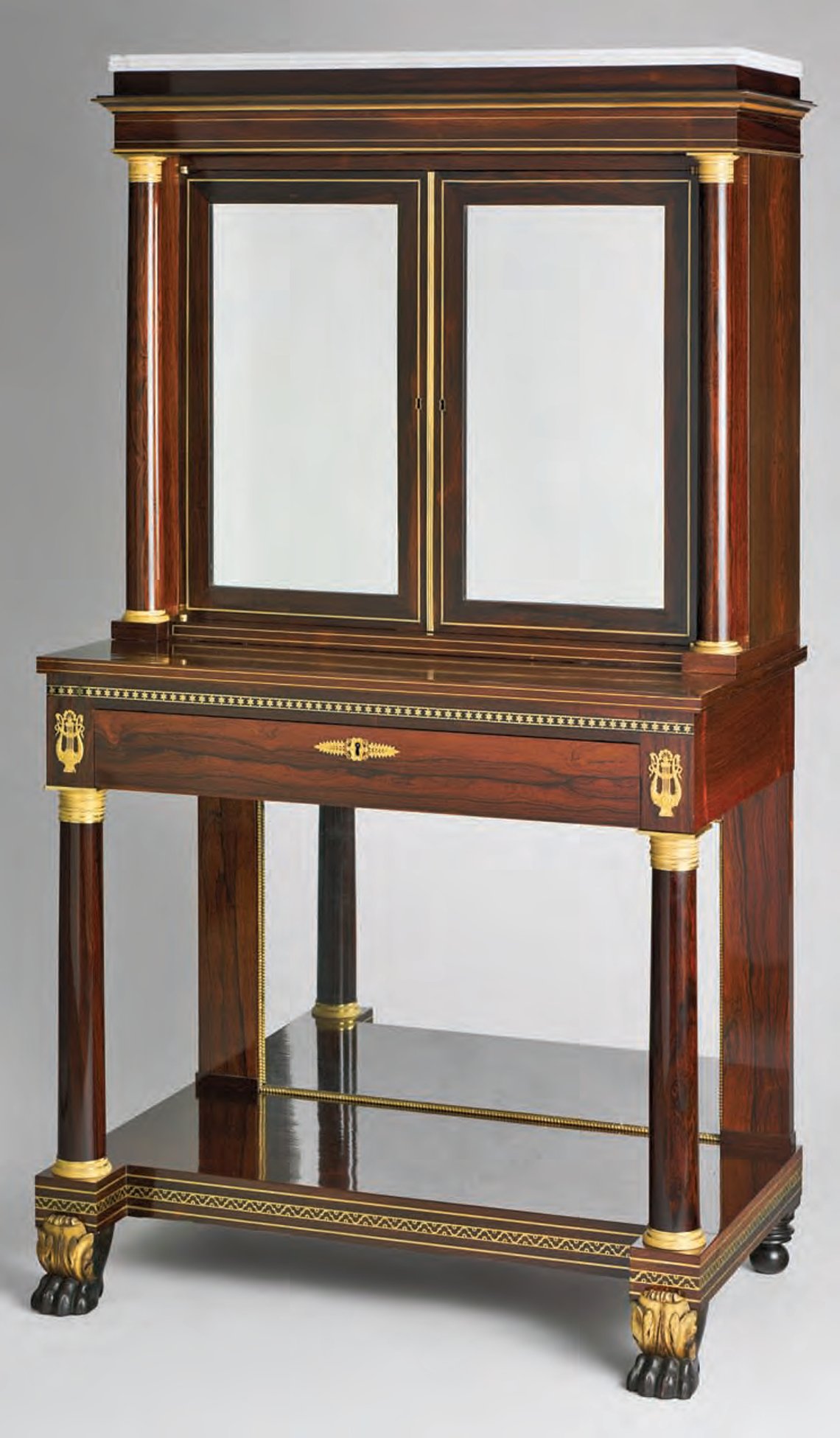 | 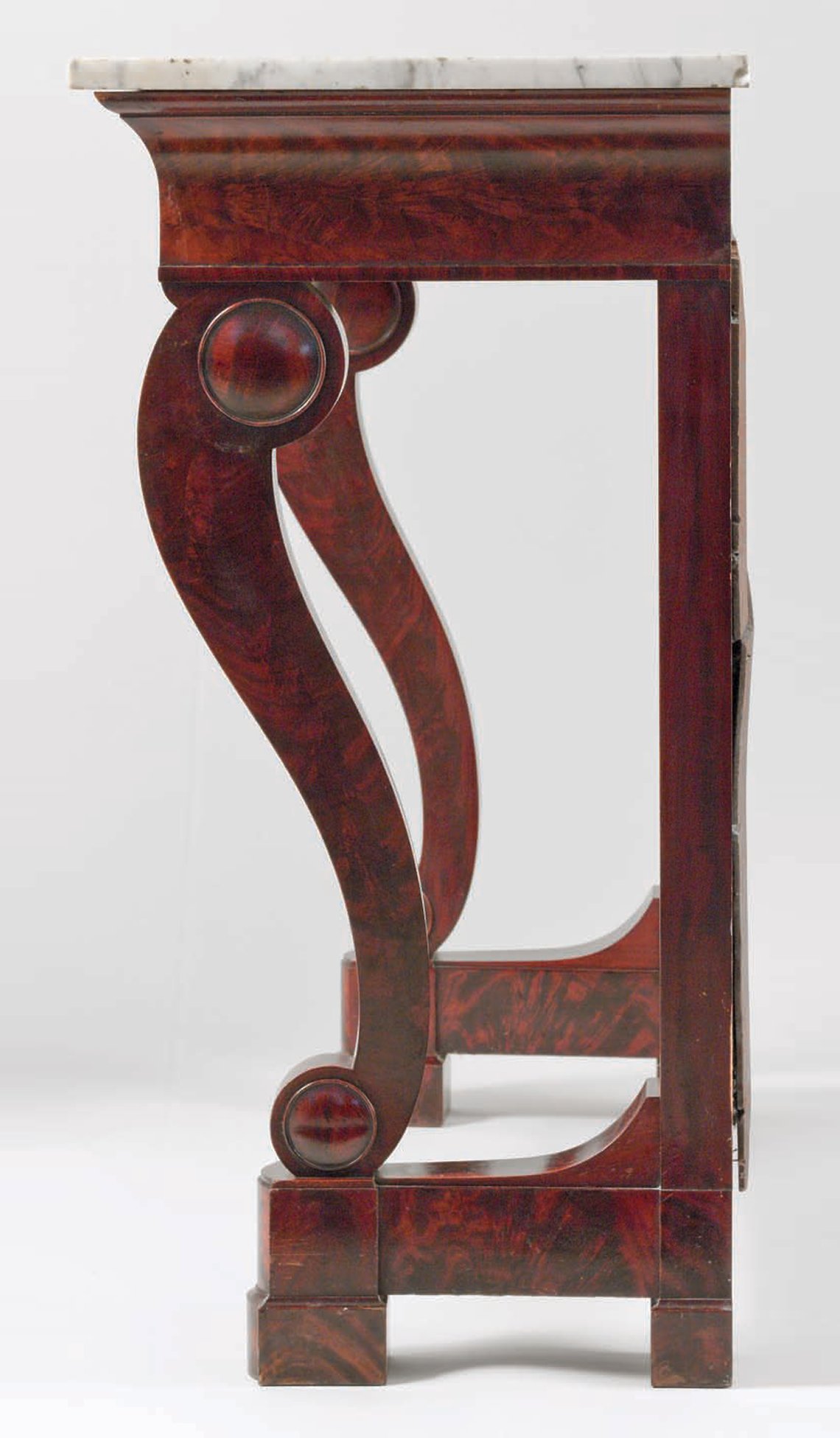 | |
| Left: Fig. 6: Attributed to Duncan Phyfe (1770–1854), secretary bookcase, probably 1822. Rosewood veneer, mahogany, gilded gesso and vert antique, gilded brass, die-stamped brass borders, marble; secondary woods: yellow poplar, white pine, mahogany. H. 67-3/4, W. 38, D. 22-7/8 in. Courtesy, Hirschl & Adler Galleries, New York. Right: Fig. 8: Duncan Phyfe (1770–1854), detail of pier table, 1834. Mahogany veneer, marble, looking-glass plate. H. 35-1/2, W. 42-3/4, D. 18-1/8 in. Courtesy, The White House, Washington, D.C., White House Acquisition Fund, 1961 (961.45.1). | ||
Just as Phyfe’s furniture from his earlier “best” period has its signature design elements like scrolled crest rails on chairs and incurved saber-shaped legs on pillar-and-claw card tables, so too does his Grecian plain style furniture. Among their distinctive features are deep cavetto cornices, simple square columns, Marlboro feet, and console supports that were known in the Phyfe shop simply as “Grecian scrolls” (Fig. 8). The latter, lifted directly from the design vocabulary of French Restauration furniture of the 1820s were ubiquitous in Phyfe’s Grecian plain style furniture. They appear on a wide range of forms, including pier tables, where they are large and sturdy enough to support a heavy marble top, and on front corners of sarcophagus-shaped cellarets and box sofas, where they are reduced in scale and less significant structurally, but serve as unifying design elements. One of the two box sofas with these Grecian scrolls recorded on the Clark invoice is illustrated in figure 9. The dozen mahogany side chairs used in the parlor with these sofas or with the dining table are especially pleasing to the modern eye (Fig. 10). Their spare lines and broad shoulder rest veneered with highly figured crotch mahogany are exceedingly close to the ancient Greek klismos that inspired it. In order to appreciate this Grecian plain style furniture one has to consider the monumental Greek Revival interiors of the 1830s, where it stood silhouetted, dark and elegant, in spaces that intimated the scale and architectural detailing of the interior of an ancient Greek temple.
Between 1837 and 1847, Duncan Phyfe took his two sons, Michael and James, as business partners and the firm went under the names D. Phyfe & Sons (1837–1840) and D. Phyfe & Son (1840–1847). It was during the latter and final stages of the business’ history that perhaps the greatest challenge Phyfe ever faced emerged; how to cope with the new wave of historical revival styles. In 1840, one Southern planter who came to New York from Columbia, South Carolina, observed to his wife in a letter that the Phyfes were “as much behind the times in style as [they were] in price.”
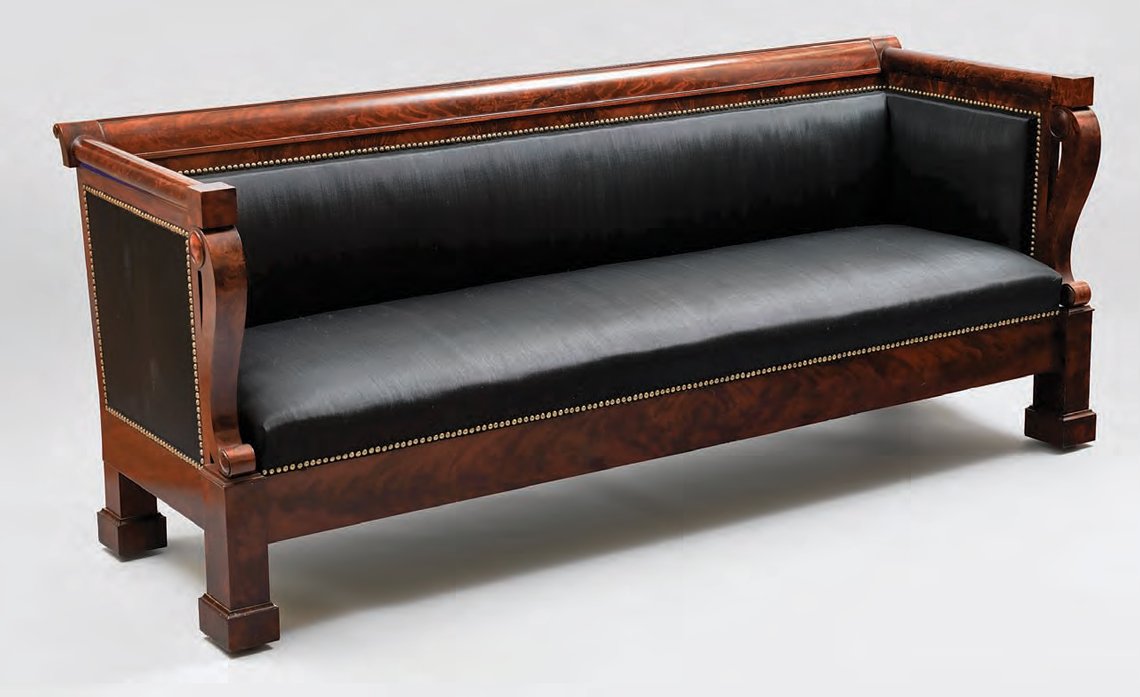 |
Fig. 9: Duncan Phyfe (1770–1854), box sofa, 1834. Mahogany, mahogany veneer; secondary woods: ash, white pine. H. 32-1/2, W. 81, D. 27 in. Courtesy, Martha Ann Sitterding and Thomas F. Stansfield. |
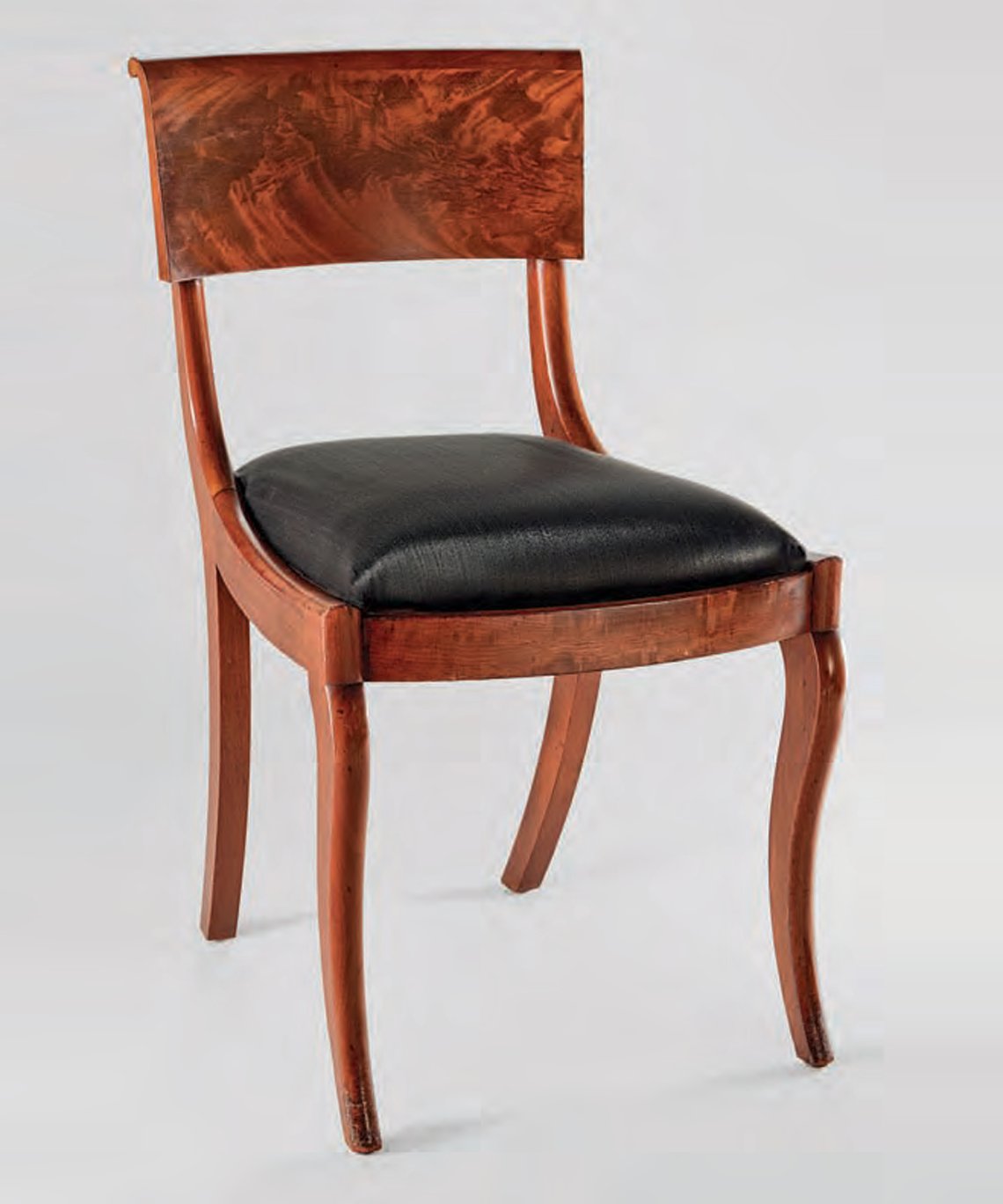 |  | |
Left: Fig. 10: Duncan Phyfe (1770–1854), Grecian side chair, 1834. Mahogany veneer, mahogany; secondary woods: ash, cherry or maple. H. 32-1/2, W. 18, D. 22 in. Photography by John Reinhadt. Courtesy, Mr. and Mrs. Robert L. Hammett. Right: Fig. 11: James DeVeaux (1812–1844), John Laurence Manning, 1838. Oil on canvas, 30-1/2 x 25-1/2 inches. Courtesy, Classical American Homes Preservation Trust. | ||
 |
Fig. 12: Double parlor of Millford Plantation, 1841, Sumter County, South Carolina, with original D. Phyfe & Son furnishings. Courtesy, Classical American Homes Preservation Trust. |
The Phyfes, confirmed classicists to the end, still, no doubt, had an obligation to please their more adventurous customers. One of these was the wealthy scion of a politically prominent South Carolina family, John Laurence Manning (Fig. 11), who married Susan Hampton, daughter of Wade Hampton, the wealthiest planter in the South, in 1838. With Susan’s money they built Millford (completed 1841), a magnificent Greek Revival mansion in Clarendon (now Sumter) County, South Carolina (Fig. 12). They were more than happy to patronize D. Phyfe & Son for all of their furniture, which filled every room of the mansion and is documented by an 1841 letter and bill of lading from D. Phyfe & Son. In every room the furniture was in the Grecian plain style, but for the double parlor, the most magnificent room in the house, the Phyfes created something entirely new, blending the Grecian with Gothic and old French style overtones. The rosewood sofa (Fig. 13) has typical Grecian scrolled ends with cusped c-scroll bracket feet outlined in flat filleting taken from the Louis XIV design vocabulary and a cupid’s bow-shaped back similar to that on sofas made during the reign of his successor, Louis XV. One of these was used on each side of the double parlor along with matching couches and a rectangular sofa or occasional tables with white statuary marble tops and robust, carved lyres on the ends (Fig. 14). The upholstered French armchairs made en suite were classical in form but with top rails in the pointed Gothic mode. The Gothic-style side chairs (Fig. 15), however, show Phyfe & Son still at the top of their game in terms of design. Taut and spare, they are as elegant as any made in Phyfe’s “best period.” The overall f loral silk upholstery fabric is a reproduction of the original used on the rosewood parlor suite and again shows the influence of the old French style of Louis XV.
 |
Fig. 13: D. Phyfe & Son (1840–1847), sofa, 1841. Rosewood veneer, rosewood, rosewood-grained mahogany; secondary woods: ash, white pine. H. 37, W. 87-1/2, D. 25 in. Courtesy, Columbia Museum of Art, Columbia, S.C.; Gift of Mrs. W. R. Clark. |
 |  | |
| Left: Fig. 14: Attributed to D. Phyfe & Son (1840–1847), detail sofa or occasional table, 1841. Rosewood, rosewood veneer, rosewood-grained mahogany, marble; secondary woods: mahogany, white pine, yellow poplar. H. 30-7/8, W. 42-1/8, D. 24-1/8 in. Courtesy, Mulberry Plantation, Camden, S.C. Right: Fig. 15: Attributed to D. Phyfe & Son (1840–1847), side chair, 1841. Rosewood, rosewood veneer; secondary wood: ash. H. 32-1/8, W. 17-1/4, D. 20-1/8 in. Courtesy, Collection of Richard Hampton Jenrette. | ||
D. Phyfe & Son closed shop in 1847. In the auction sale of the contents of the furniture warehouse, among the over four hundred pieces of furniture offered, only a handful are described as Gothic and only a single rosewood sofa, “style of Louis XIV, serpentine front, covered with rich fig’d crimson plush,” and eight rosewood chairs to match are listed, which seems to indicate that D. Phyfe & Son never fully engaged with the emerging historical revival styles. Nonetheless, the interesting design and quality of the Millford furniture leaves open the door for future discoveries of furniture from the final chapter of the Phyfe family enterprise.
Duncan Phyfe: Master Cabinetmaker in New York is on view through May 6, 2012 at The Metropolitan Museum of Art, New York. An illustrated catalogue by Peter M. Kenny, Michael K. Brown, Frances F. Bretter, and Matthew A. Thurlow accompanies the exhibit ion (Yale University Press). For more information visit www.metmuseum.org or ca l l 212.535.7710. The exhibition travels to the Museum of Fine Arts, Houston, where it will be on exhibit from June 24–September 9, 2012 (www.mfah.org).
1. Hagen [1907], “Duncan Phyfe Memorandum,” reproduced in Nancy V. McClelland, Duncan Phyfe and the English Regency, 1795–1830, New York, 1939. family enterprise.
Peter M. Kenny is the Ruth Bigelow Wriston Curator of American Decorative Arts and Administrator of The American Wing, The Metropolitan Museum of Art, New York. He and Michael K. Brown organized the exhibition.
All photography, unless noted, by Bruce Schwarz. Images ©The Metropolitan Museum of Art.
 |
This article was originally published in the 12th Anniversary (Winter-Spring 2012) issue of Antiques & Fine Art magazine, a fully digitized version of which is available at www.afamag.com. AFA is affiliated with Incollect.com.
 |




